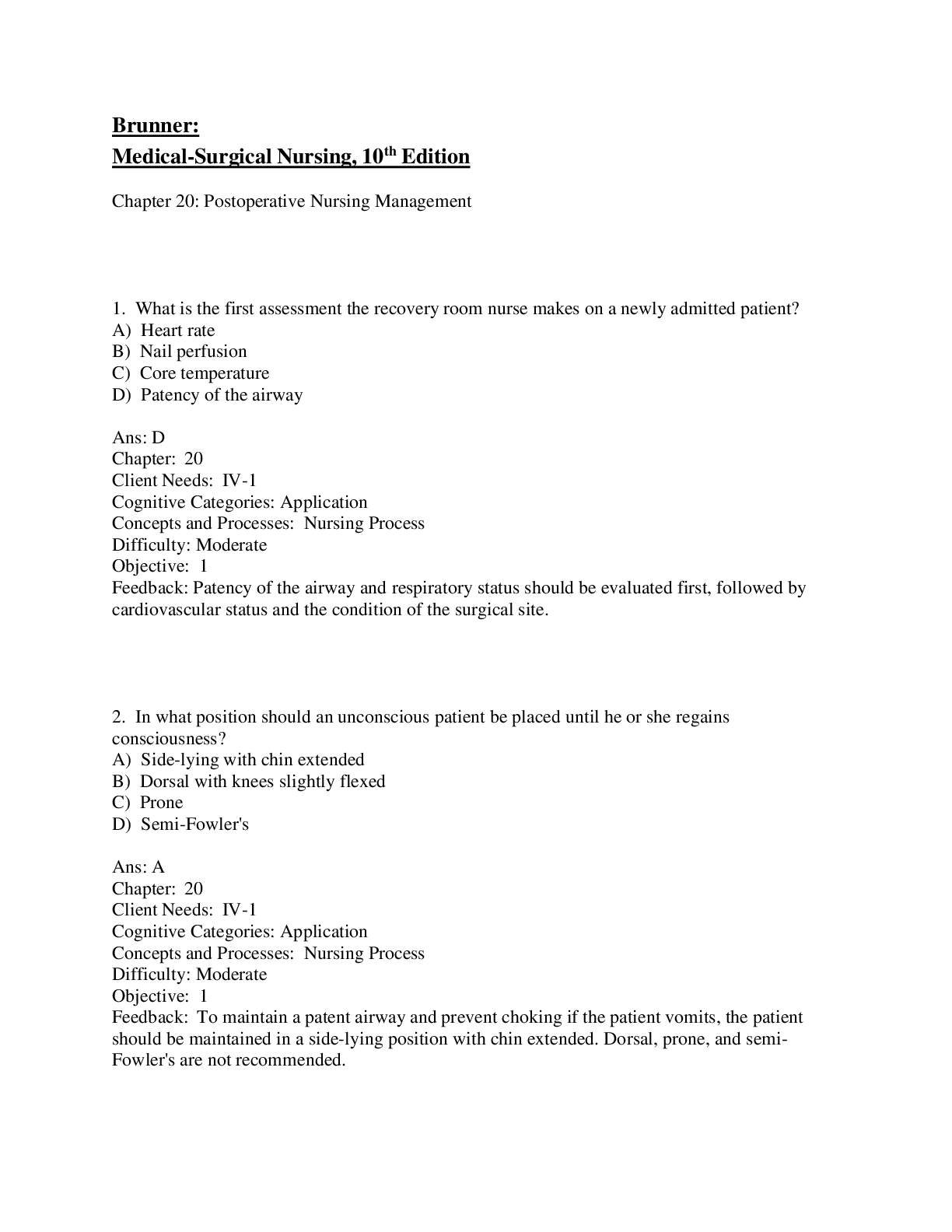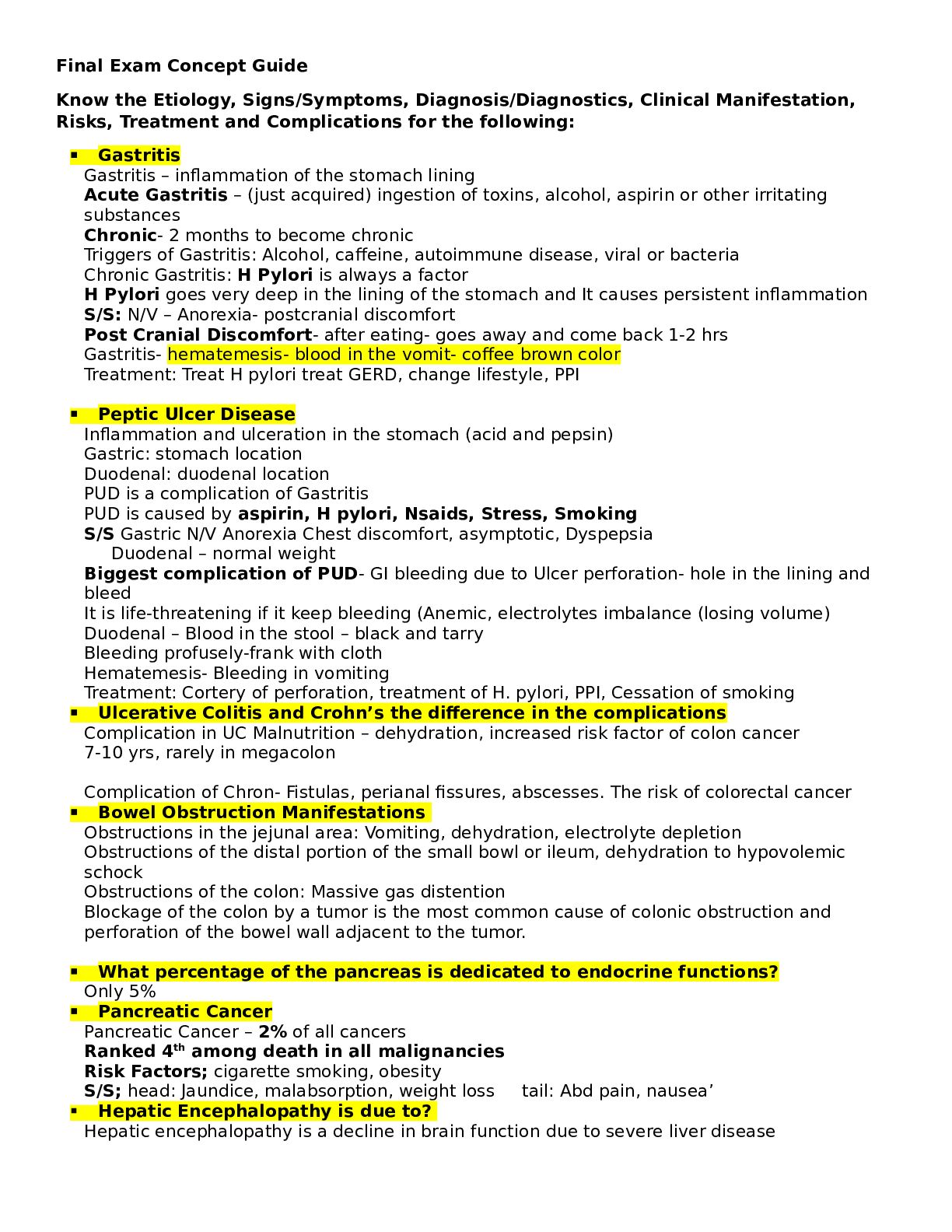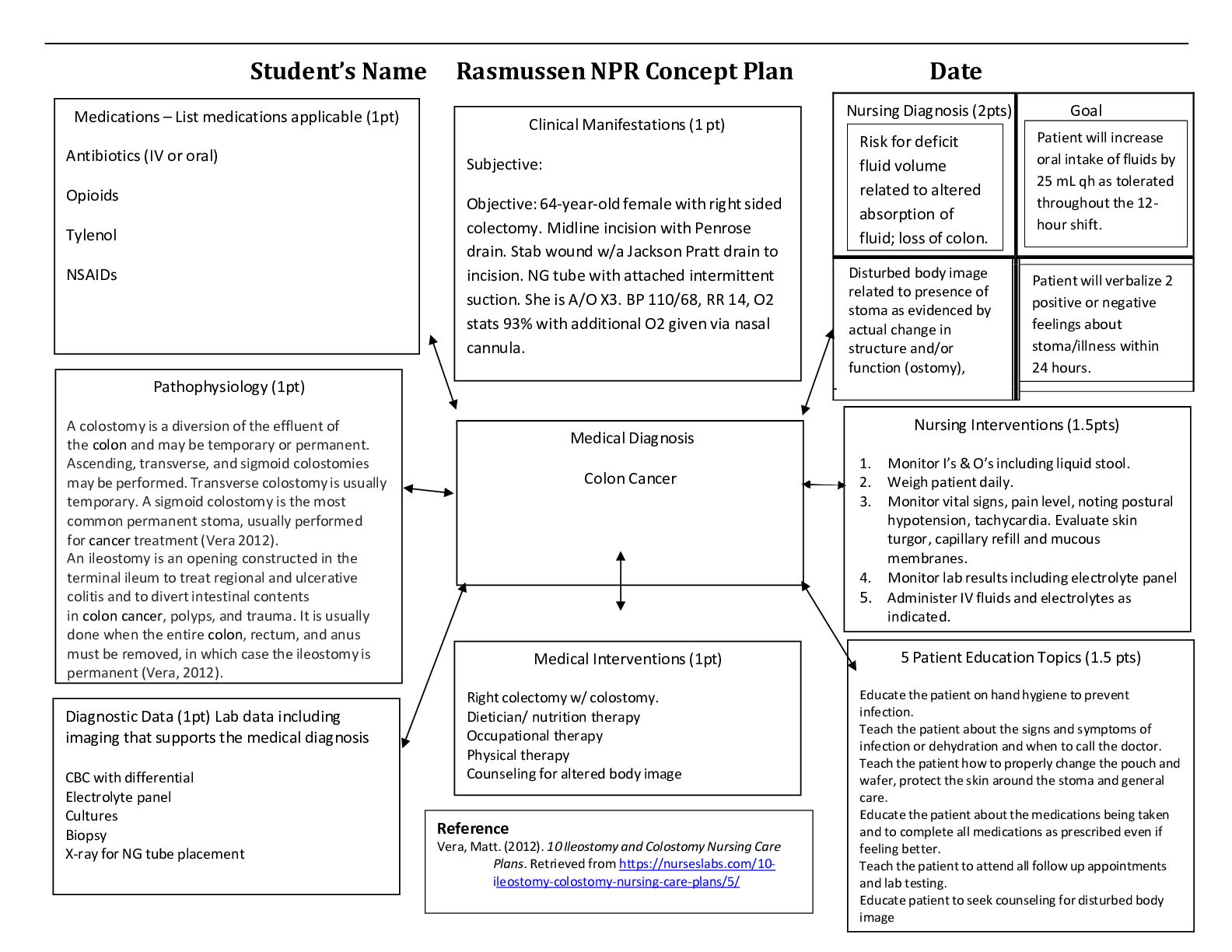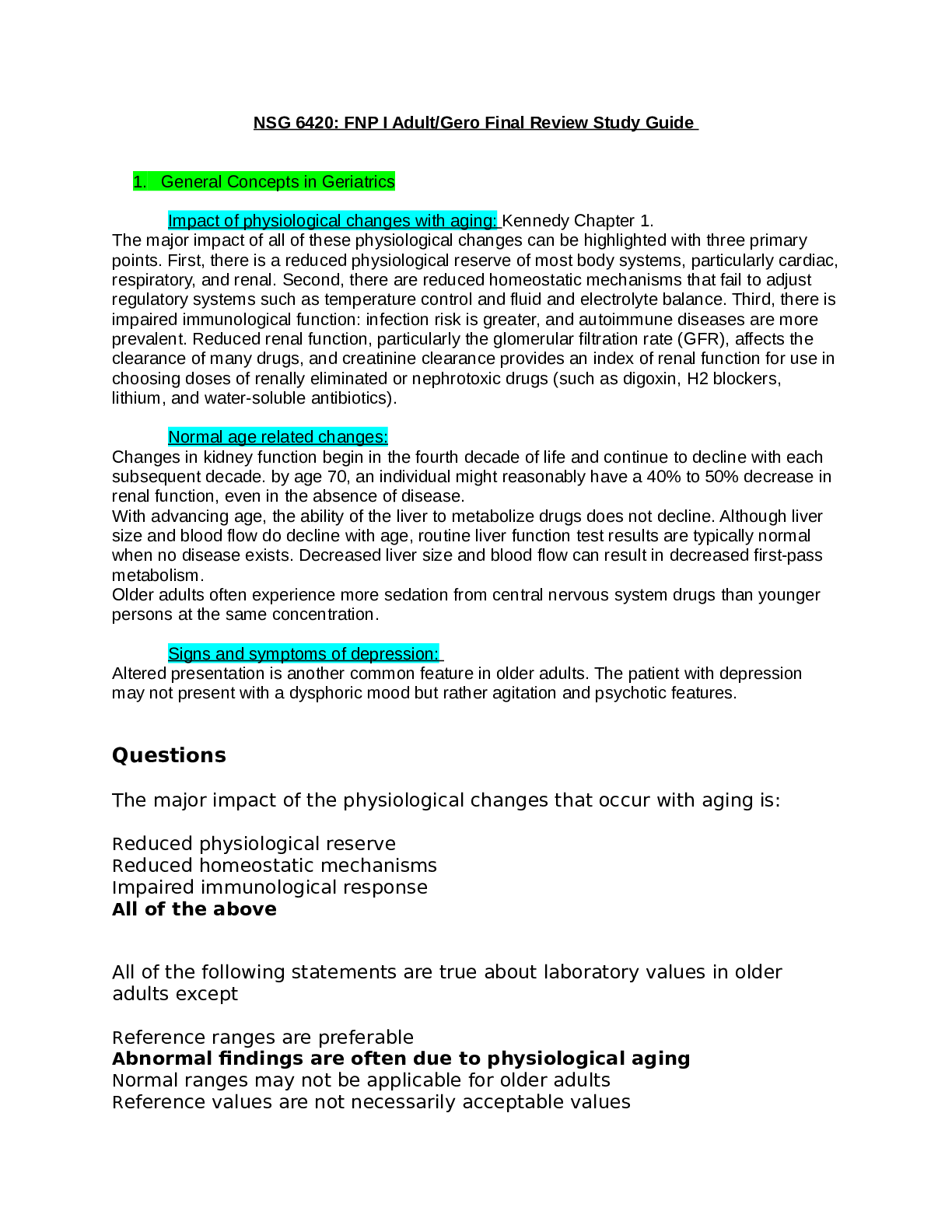*NURSING > EXAM REVIEW > Chapter 20- Postoperative Nursing Management (All)
Chapter 20- Postoperative Nursing Management
Document Content and Description Below
Brunner: Medical-Surgical Nursing, 10th Edition Chapter 20: Postoperative Nursing Management 1. What is the first assessment the recovery room nurse makes on a newly admitted patient? A) H... eart rate B) Nail perfusion C) Core temperature D) Patency of the airway Ans: D Chapter: 20 Client Needs: IV-1 Cognitive Categories: Application Concepts and Processes: Nursing Process Difficulty: Moderate Objective: 1 Feedback: Patency of the airway and respiratory status should be evaluated first, followed by cardiovascular status and the condition of the surgical site. 2. In what position should an unconscious patient be placed until he or she regains consciousness? A) Side-lying with chin extended B) Dorsal with knees slightly flexed C) Prone D) Semi-Fowler's Ans: A Chapter: 20 Client Needs: IV-1 Cognitive Categories: Application Concepts and Processes: Nursing Process Difficulty: Moderate Objective: 1 Feedback: To maintain a patent airway and prevent choking if the patient vomits, the patient should be maintained in a side-lying position with chin extended. Dorsal, prone, and semi- Fowler's are not recommended. 3. Upon admission to the post-anesthesia care unit, a patient's blood pressure was 130/90 and the pulse was 68. After 30 minutes, the patient's blood pressure is 120/65, and the pulse is 100. The patient's skin is cold, moist, and pale. The patient is showing symptoms of which of the following? A) Hypothermia B) Hypovolemic shock C) Neurogenic shock D) Malignant hypothermia Ans: B Chapter: 20 Client Needs: IV-1 Cognitive Categories: Application Concepts and Processes: Nursing Process Difficulty: Moderate Objective: 1 Feedback: The patient is exhibiting symptoms of hypovolemic shock; therefore, the nurse should first notify the patient's physician. 4. The patient is in the recovery room following chest surgery and complains of severe nausea. The nurse should first: A) Administer an analgesic. B) Apply a cool cloth to the patient's forehead. C) Offer the patient a small amount of ice chips. D) Turn the patient completely to one side. Ans: D Chapter: 20 Client Needs: IV-1 Cognitive Categories: Application Concepts and Processes: Nursing Process Difficulty: Moderate Objective: 3 Feedback: Turning the patient completely to one side allows collected fluid to escape from the side of the mouth if the patient vomits. Ice chips can increase feelings of nausea. After turning the patient to the side, the nurse can offer a cool cloth to the patient's forehead. 5. A nurse is caring for a patient after abdominal surgery in the post-anesthesia care unit. The patient's blood pressure has increased and the patient is restless. The patient's oxygen saturation is 97%. What is likely the cause for the increase in blood pressure and restlessness? A) The patient's temperature is low. B) The patient is in shock. C) The patient is in pain. D) The patient is nauseated. Ans: C Chapter: 20 Client Needs: IV-1 Cognitive Categories: Application Concepts and Processes: Nursing Process Difficulty: Moderate Objective: 3 Feedback: An increase in blood pressure and restlessness are symptoms of pain. The patient's oxygen saturation is 97 %, so hypothermia and shock are not likely causes of the patient's restlessness. 6. The recovery room nurse would assess the patient's respiration effectively by doing which of the following? A) Place the palm of the hand at the patient's nose and mouth to feel the exhaled breath. B) Visualize the rise and fall of the patient's abdomen. C) Place the palm of the hand on the patient's abdomen to count the rate. D) Visualize the rise and the fall of the patient's chest. Ans: A Chapter: 20 Client Needs: IV-1 Cognitive Categories: Application Concepts and Processes: Nursing Process Difficulty: Moderate Objective: 1 Feedback: The nurse should place the palm of the hand at the patient's nose and mouth to feel the exhaled breath. A patient may have an obstructed airway that would cause the abdomen or chest to rise and fall. By feeling the exhaled breath, the nurse can be sure the patient's airway is patent. 7. A 60-year-old patient is admitted into the recovery room following cataract surgery. Which of the following postoperative complications could have an adverse effect on this patient's surgery? A) Pain B) Vomiting ................................................................................CONTINUED.............................................. [Show More]
Last updated: 1 year ago
Preview 1 out of 12 pages
Instant download

Buy this document to get the full access instantly
Instant Download Access after purchase
Add to cartInstant download
Reviews( 0 )
Document information
Connected school, study & course
About the document
Uploaded On
Apr 14, 2021
Number of pages
12
Written in
Additional information
This document has been written for:
Uploaded
Apr 14, 2021
Downloads
0
Views
51

.png)










